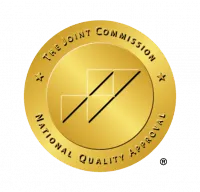Overcoming Anhedonia After Addiction
While recovery from addiction generally makes you feel much better in the long run, some people find themselves in low spirits during the first few weeks or months, struggling to enjoy the things they once did. This “pleasure deafness” is known as anhedonia, and is a consequence of the long-term impact of substance use on one’s brain chemistry.
Anhedonia can be a significant factor in relapse. Motivation becomes a challenge, and people may feel like sobriety is more unpleasant than life during active addiction. Plus, the brain’s reward center trains you to associate alcohol with pleasure—so when you aren’t experiencing any, you may want to turn to alcohol.
Fortunately, anhedonia is temporary, and there are plenty of useful strategies to help you manage it. In this post, we’ll unpack what causes this phenomenon, how to overcome anhedonia, and why it’s so common in addiction recovery.
What is Anhedonia?

Anhedonia is when your capacity to feel pleasure is reduced or absent. It’s best known as a symptom of depression, but it can also affect people with other mental health issues and people in recovery.
Symptoms of anhedonia include:
- Less interest in previous hobbies
- Withdrawal from previous relationships
- Not wanting to socialize, or feeling more anxious in social situations
- Reduced pleasure in daily activities
- Lack of interest or less pleasure in physical intimacy
- Food tasting more bland
- Negative feelings about yourself and others
So, you may be experiencing anhedonia if:
- Painting, cooking, or playing basketball once invigorated you, but you now can’t seem to enjoy it the way you used to.
- You find yourself feeling indifferent to your partner, with little to no interest in physical intimacy.
- You don’t feel like talking to people, even those you love, and consistently turn down invites from friends.
- Food doesn’t taste as good anymore, and you sometimes have to remind yourself to eat.
Why Anhedonia is Common in Addiction Recovery
Research suggests that anhedonia is linked to dysfunction in dopamine and the brain’s reward system. This system plays a major role in pleasure and motivation. It rewards us with positive feelings when we engage in behaviors necessary for the survival of our species, like eating and having sex.
Anhedonia after addiction is common because substances like alcohol interfere with the brain’s reward system. Do you experience a wave of pleasure or feelings of euphoria when you drink alcohol? That’s caused, in part, by a surge of dopamine.
Alcohol artificially activates the same reward system that’s stimulated by essential activities like eating. As a result, your brain is primed to continue seeking the reward you experience when drinking alcohol. And the more you drink, the stronger that need gets, eventually leading to cravings and dependency.
Over time, your reward system adapts to these strong surges of dopamine. You need more and more alcohol to feel the same effects, and everyday pleasures like food and sex become less enjoyable by comparison. Alcohol also affects other neurotransmitters in the brain, including GABA, which helps control anxiety, stress, and fear.
Because alcohol addiction alters your brain chemistry, it takes time for your brain to rebalance itself in recovery. After giving up alcohol, some people experience post-acute withdrawal syndrome (PAWS), which includes symptoms like anxiety, depressed mood, and increased sensitivity to stress. In short, alcohol’s interference with neurochemicals—especially dopamine—can make people vulnerable to anhedonia after addiction.
How Long Does Anhedonia Last in Recovery?
The good news is that anhedonia in recovery is temporary. Right now, you’re going through a major change without your usual coping tools. But as your brain heals and adjusts to recovery, the feeling of “emotional flatlining” will fade.

So, how long does anhedonia last? The answer varies. Researchers have found that anhedonia is closely linked with withdrawal, which typically lasts 5-7 days. However, people who experience PAWS can experience anhedonia for weeks or months, depending on the duration and intensity of alcohol use.
Fortunately, you don’t just have to wait for anhedonia to pass—there are many strategies you can use to manage and overcome it.
How To Manage Anhedonia In Recovery
For any mental health issue, it’s important to prioritize your physical health and self-care. When you start to feel better physically, you’ll also begin feeling better mentally and emotionally. And many healthy activities naturally provide mood-boosting endorphins and dopamine.
These simple, effective strategies can help you manage anhedonia and overcome “emotional flatlining”:
Exercise
Exercise releases feel-good chemicals like endorphins and endocannabinoids (the chemicals mimicked by cannabis), which also increases dopamine in the brain’s reward system. It’s a natural, healthy way to give yourself a boost.
Physical activity can reduce stress and improve your mood, and aerobic exercise (cardio) in particular can lead to significant improvement in symptoms of depression. In fact, people who are more physically active are less likely to have depression and anxiety.
To get even more benefits from exercise, go for a run or a swim on a sunny day. Sunlight increases the brain’s release of serotonin, which can boost your mood and help you feel calm.
Nutrition
In recovery from alcohol addiction, nutrition plays an important role in helping your system bounce back. A nutritious diet with the right vitamins and supplements helps you feel physically healthier and overcome long-term withdrawal symptoms like anxiety and depression.
Some foods can even increase production of dopamine or be converted to dopamine when digested. Eat foods that are rich in protein and vitamin B like beef, turkey, nuts, dairy, legumes, and leafy greens. Vitamins like B6, iron, folate, and niacin also help your body produce dopamine.
Meditation
Meditation helps you learn to be present in the moment, observe your thoughts and feelings without judgment, and get a healthy sense of perspective. It can result in small to moderate reductions in anxiety, stress, and even pain. Practicing relaxation and stress management helps you declutter your mind, increase positive feelings, and ultimately feel better from within.
Sleep
When you’re well-rested, you typically have more energy and a better mood. Sleep gives your body a chance to rest and recharge, so it can support healthy brain function and overall physical health. And although more research is needed in this area, several studies suggest that lack of sleep can cause or worsen anhedonia. Try to stick to a consistent sleep schedule and get at least 7-9 hours of sleep each night.
Why Medication-Assisted Treatment Can Help
Medication-assisted treatment is another very effective way to overcome anhedonia in addiction recovery. It combines medication with counseling and other therapeutic techniques to treat both your physiological symptoms and any underlying causes.
Medications like acamprosate and gabapentin can help you manage some of the long-term imbalances in brain chemistry caused by heavy alcohol use. As your brain chemistry rebalances, your capacity to feel pleasure will begin to return to normal.
Acamprosate stimulates neurotransmitters like GABA that calm your nervous system and reigns in the ones that ramp it up, helping to restore the chemical imbalance caused by chronic drinking. Gabapentin can help relieve anxiety, insomnia, and withdrawal symptoms, and reduce overall alcohol consumption. Other medication options include naltrexone, baclofen, and topiramate.
These medications work best in combination with behavioral therapy and other support. Counseling or therapy can help you identify unhealthy emotions, beliefs, or behaviors and work to adjust them. You can also identify personal goals and develop skills and techniques to help you stay on track.
Anhedonia can feel hopeless. But it’s thankfully temporary, and—with the right support—treatable. Get in touch to learn how we can help.
Will insurance cover treatment? Verify Coverage
Have Questions? Call (800) 504-5360



